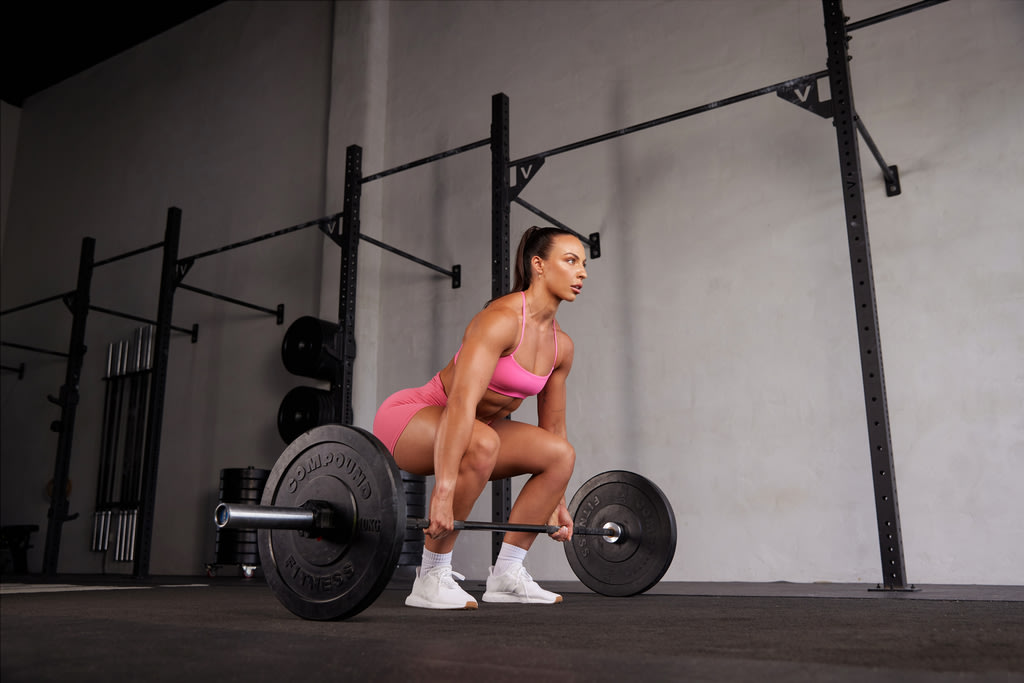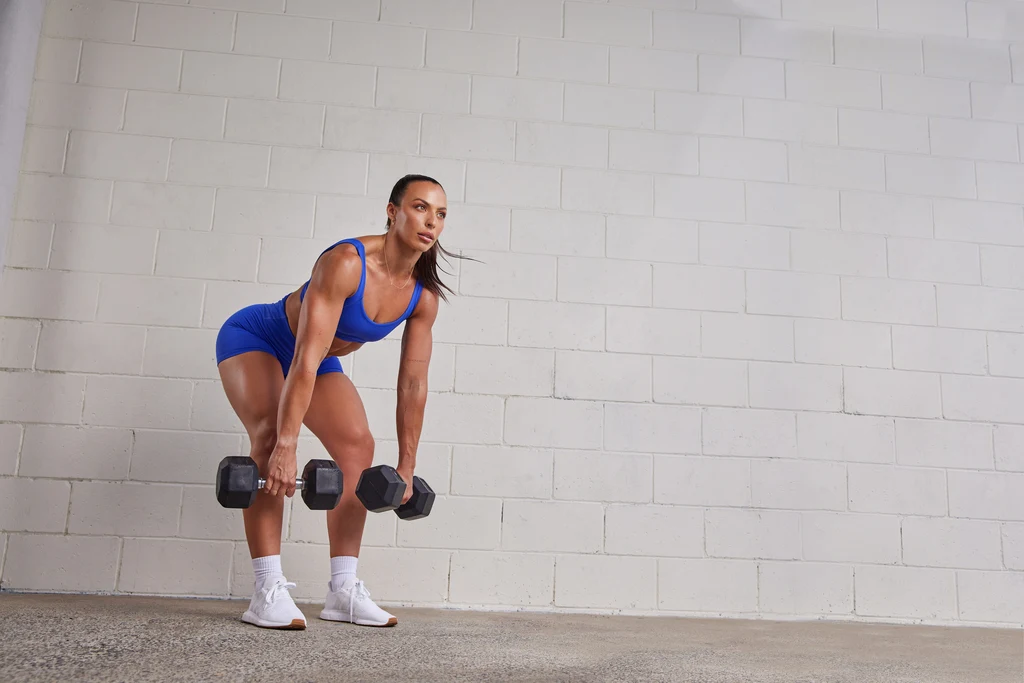How To Start Your Heavy Lifting Journey

May 19, 2019 - Updated December 11, 2023

No matter where you are in your strength training journey, the feeling of being able to lift heavy weights is SO empowering.
Many women in the Sweat Community can affirm that the sense of accomplishment they get from heavy lifting is unlike that of any other style of training they have tried.
However, it’s also common for the idea of lifting heavy weights to feel daunting or out of reach, especially if you’re just getting started on your fitness journey. If levelling up your strength and lifting heavier weights is a goal of yours, you can do it. The trick is knowing where to start, sticking with it and believing in yourself.
In the Sweat app, you’ve got three incredible programs to choose from. These programs have been designed to help you achieve your heavy lifting goals by allowing for structured progression and gradual increases in strength through progressive overload and weights tracking:
Lift with Laura: a program designed to help you build strength and muscle, with a focus on progressive lifting and metabolic conditioning, alongside some foundational Olympic lifting elements.
PWR Strength with Kelsey: a low-impact weight training program designed to have you working close to muscle failure to improve your strength and lift heavier weights over time.
BUILD: a powerbuilding program that aims to improve your 1RM or “one-rep max” on three primary lifts - sumo deadlift, bench press and squat.
Having an understanding of the training principles behind these programs can go a long way towards you hitting the ground running with your chosen program and smashing your goals, so we’ve put together a guide to what you need to know to make it happen!
How to get stronger and lift heavy weights
Whether you’re a complete beginner to strength training or have been lifting for a while, taking your strength to a new level isn’t something that happens overnight. To take the guesswork out of how to achieve your heavy lifting goals, here are our top 9 tips. You’ve got this!
Follow the right training program
Have a good look in the Sweat app or check out our program lineup to learn what each lifting program offers to figure out which one will suit your goals and lifestyle best. You could also try a workout from a couple of programs to see which one you enjoy the most before deciding - this a great way to get the most out of your 7-day free trial if you’re new to Sweat!
While each program has been carefully designed to achieve a balance between working hard and letting your body recover, they do vary slightly in terms of workout structure, exercises, weekly workouts and equipment, so finding your best fit is a great starting point to set you up for success.
Be honest about your starting point
You’ve set yourself an ambitious goal and we love that and are backing you every step of the way, but you still need to start where you are.
In the first week of your program, don’t go in too hot and try to lift way heavier than what you can handle right now. Chances are, you’ll compromise on your form, feel too sore to keep training, or increase your risk of an injury.
This is also important if you’re new to any of the exercises in your workouts. Make it your focus to always master your form before pushing yourself to increase your weights. If you’re unsure about how to perform an exercise, check out the instructional video or use the muscle groups feature in the Sweat app to see where you should be feeling the burn.
Strength gains are a long-term goal, so be patient and remind yourself that in a few weeks’ time, you can be lifting heavier. You don’t need to rush into it on day one.
Never skip your warm-up
Walking into a gym and loading up the bar without warming up properly is not a safe way to train, particularly if you plan to lift heavier weights or are new to this style of training.
It is SO important to warm your body up to prepare your muscles and joints for the heavy loads they are about to carry.
For this reason, we recommend starting with a cardio warm-up, before adding on some mobility drills and warm-up sets of the exercises in your workout.
For example, if you were performing squats in your workout, you might include a few sets of 6-10 repetitions at a lighter weight or lower RPE (rate of perceived exertion) before you begin to warm up your muscles and strengthen that mind-muscle connection.

Pick the right weight
One of the questions we are most frequently asked when it comes to strength training is how to know what weight to choose. This is definitely something that comes with time and experience, but a general rule of thumb is to choose a weight that feels challenging, but you can complete the full number of reps without compromising on your form.
When you’re just starting out with lifting weights, know that this will take some trial and error at the beginning as you figure out where that sweet spot is. Some programs also are designed with RPE recommendations (rate of perceived exertion) to help you out with your weight selection!
If you’re not sure, it’s always better to start with a lighter weight to avoid injury and ensure you perform the exercise with the correct form. Don’t worry about what anyone else is lifting, it’s about your personal progress.
Focus on your breathing
It is often overlooked, but a key component of any strength training program is your breathing. Each inhale and exhale changes the volume of your lungs, as well as the position of your ribs, thoracic spine and many other parts of your body, which can affect your lifting movements.
You should breathe out as you lift the weight, as your exhalation increases the engagement of your core and provides greater stability for the lift.
Controlled breathing can help you lift a heavier weight while also helping to get more oxygen into your body, reducing the chance of a sudden spike in blood pressure and dizziness that can occur when you hold your breath during a heavy effort. Take slow, deep breaths in through your nose and you should find it easier to dig deep on big lifts.
Technique first, always
If you think you’re ready to try a heavier weight at any point in your program but can feel your form is being impacted, don’t be embarrassed to lower your weights. As we’ve said, this can increase your risk of injury, create poor movement habits, engage the wrong muscles, and leave you too sore to keep training. And remember - even the strongest athletes have off-days or fail to lift the weight they want!
Having a workout buddy or someone to spot your lifts can also be a way to keep yourself safe while lifting heavy weights, or filming yourself if you’re alone for regular form checks. Compare them to the instructional exercise videos in the Sweat app and you’ll be good to go!

Feeling challenged is essential
We’ve covered how to begin, but it’s also essential to know how to make progress. Just like listening to your body is essential to make sure you’re not lifting too heavy, it’s also a must to figure out when to go heavier.
If you’re performing deadlifts and think to yourself, I started with this weight but it doesn’t feel so hard anymore, that’s the moment you’ve been waiting for! Try adding just a little bit of extra weight and see how you feel. Worst case, it’s too hard and you go lighter until you try again - no stress. Best case, you feel challenged but successfully complete your set and know you’re making gains! Massive win.
Allow for adequate rest
Training consistently and at a tough intensity is key if you want to see your strength improve, but rest and recovery need to be as much of a priority as the work! This applies to your workouts themselves and what you do in between sessions.
Heavy lifting workouts naturally require longer rest periods between sets to help your muscles recover prior to the next set. For each lifting program in the Sweat app, you’ll be prompted with suggested rest times to ensure you’re taking adequate breaks during your workouts. Our trainers recommend taking this full amount of rest and not skipping it, but feel free to take a little bit more if you need it. On top of that, there are also recovery sessions and rest days as part of each program.
Many people underestimate the physical demand of heavy lifting, so it’s important to listen to your body. If your performance has dropped off, it could be a sign you need to decrease the volume of your training to allow for adequate recovery before you ramp it back up again. Keeping track of your menstrual cycle can also help you understand changes in your performance and energy.
Not every workout should feel like your absolute max and your workout routine has to be balanced with rest time, lighter training days and good quality sleep to allow your muscles to rebuild.
Don’t neglect your nutrition
Heavy lifting demands a lot of energy from your body and takes its toll on your muscles, so it’s important to fuel your body with the required macronutrients before and after training.
Make sure you’re eating enough protein to repair and rebuild your muscles, alongside those all-important carbohydrates for energy and fats for brain and cell health, nutrient absorption, and healthy blood pressure and cholesterol.
If you’re not progressing as you hoped towards your strength goals, eating more protein and making sure you’re eating enough in general can be helpful tweaks to your nutrition!
Lifting heavy weights or want to start? You can do this!
Are you feeling confident about how to get stronger now and excited to try a new program?
Effort and consistency are key when it comes to seeing results, so make sure you plan and commit to your training. Ready? Let’s go!

A more empowered you starts with Sweat, and our editorial team is here to bring you the latest fitness tips, trainer recommendations, wellbeing news, nutritional advice, nourishing recipes and free workouts.
* Disclaimer: This blog post is not intended to replace the advice of a medical professional. The above information should not be used to diagnose, treat, or prevent any disease or medical condition. Please consult your doctor before making any changes to your diet, sleep methods, daily activity, or fitness routine. Sweat assumes no responsibility for any personal injury or damage sustained by any recommendations, opinions, or advice given in this article.
Fitness